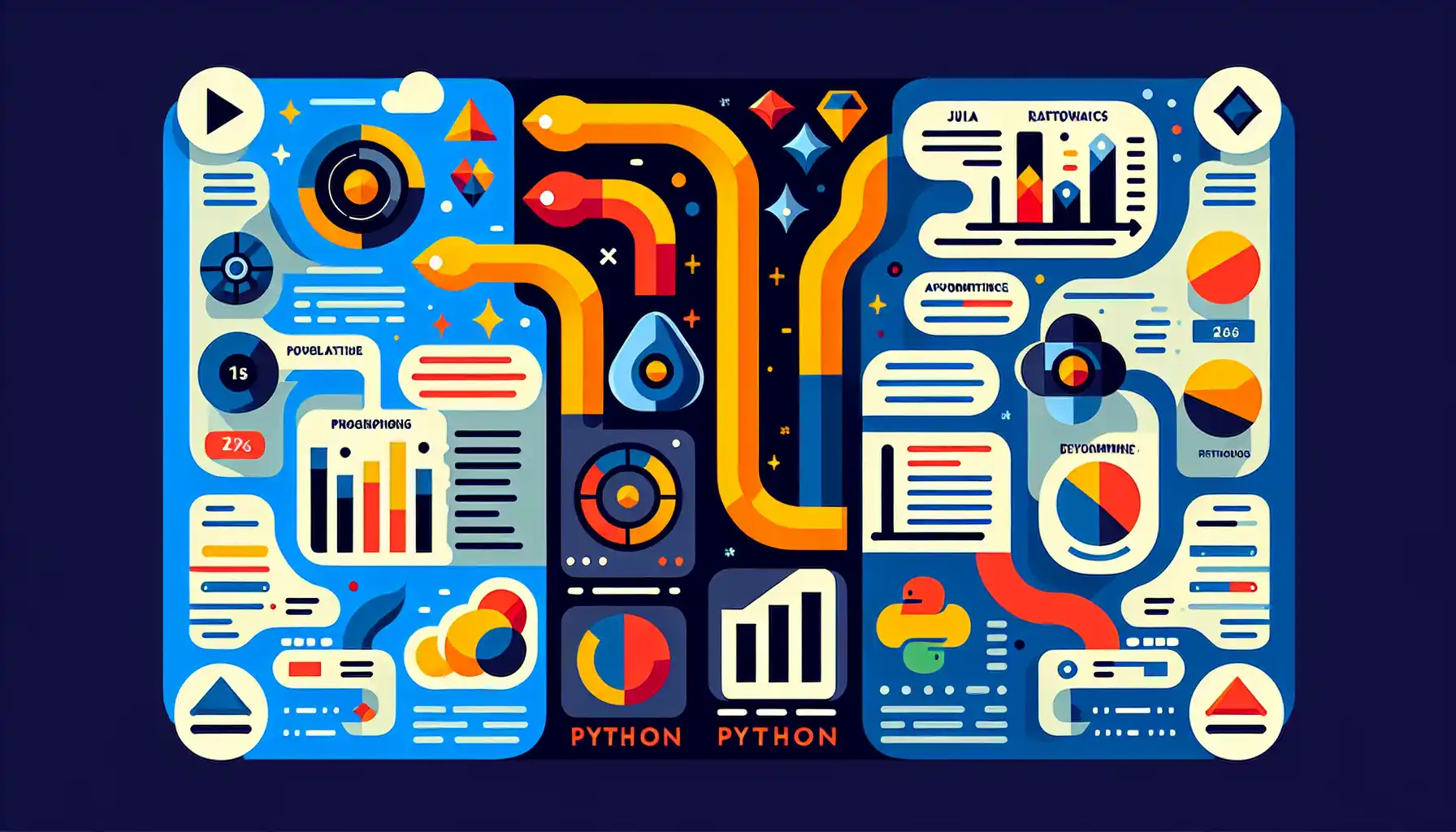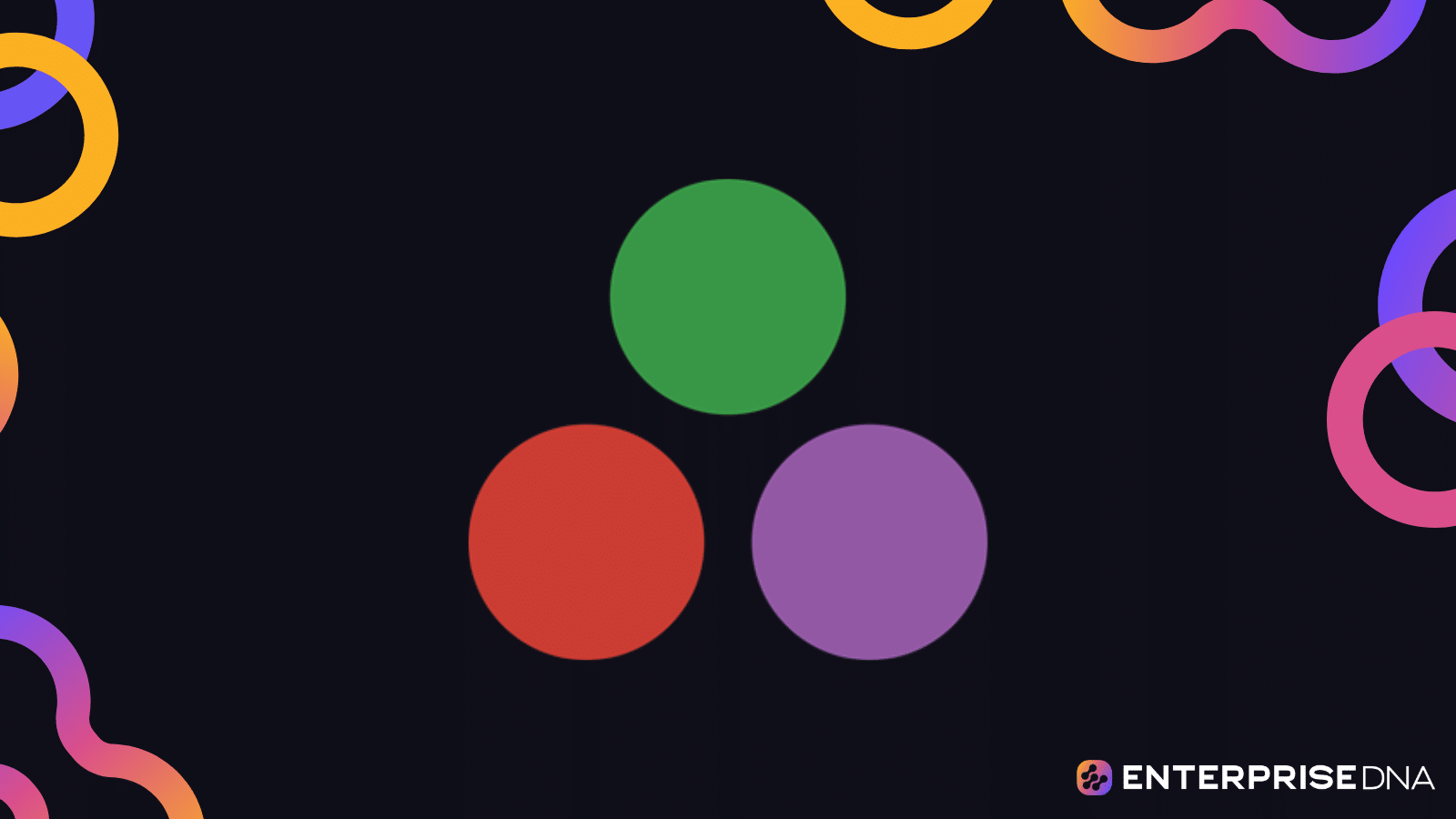When it comes to data science, Python and R are the big names that usually come to mind. Both languages are widely used in the field, have extensive libraries for data manipulation and analysis, and are relatively easy to learn.
However, a new contender has entered the arena: Julia. This high-level, high-performance programming language is gaining traction in the data science community due to its numerous advantages over its predecessors.
So, why is Julia becoming the next big thing in data science?
- Julia is faster and more efficient than Python and R, making it an ideal choice for handling large datasets and computationally intensive tasks.
- Julia’s easy-to-read syntax and the ability to seamlessly integrate with other programming languages, including Python, R, and C++, allow data scientists to leverage existing code and libraries without sacrificing performance.
- Julia’s built-in support for parallel and distributed computing enables data scientists to tackle complex problems more quickly by utilizing multiple processors and computer clusters.
- Julia is continuously evolving, with a growing number of packages and a strong community of developers supporting its development and adoption.
If you are ready to explore the potential of Julia and why it might just be the next big thing in data science, read on.
In this article, we’ll give you an introduction to Julia, and compare it with the more popular languages like Python and R.
We’ll also share some helpful resources and tips for getting started with Julia for data science.
What is Julia?

Julia is a high-level, high-performance programming language specifically designed for technical and scientific computing. It was developed to address the shortcomings of existing programming languages in handling complex mathematical operations and large datasets.
It’s a general-purpose language, but its primary focus is on data science, machine learning, scientific computing, and high-performance computing.
Why is Julia Popular in Data Science?

There are several reasons why Julia is gaining popularity among data scientists:
1. Performance
Julia is a fast and efficient language, often outperforming both Python and R in terms of speed. This is a significant advantage when working with large datasets and complex algorithms.
Its high performance makes it ideal for computationally intensive tasks such as optimization, linear algebra, and simulation.
2. Interoperability
Julia has excellent interoperability with Python and R. This means you can easily integrate existing code and libraries from these languages into your Julia projects.
This is particularly valuable as it allows you to take advantage of the extensive data science ecosystems in Python and R, while also benefiting from Julia’s speed and performance.
3. Multiple Dispatch
One of Julia’s key features is multiple dispatch, which enables you to define functions and methods that can work with different types of data.
This allows for more flexible and readable code, as well as better performance optimizations. Multiple dispatch is particularly useful in the context of data science, where you often work with a variety of data types and structures.
4. Growing Ecosystem
The Julia community is active and growing, with a strong focus on data science and machine learning. There are numerous Julia packages and tools available for data manipulation, visualization, and statistical analysis.
This growing ecosystem makes it easier to find the resources and support you need for your data science projects.
Julia vs. Python and R

To understand the impact of Julia on data science, it’s essential to compare it to the more popular data science languages like Python and R.
Let’s take a look at how Julia compares to these languages.
1. Julia vs. Python
Julia is a relatively new language designed to address some of the limitations of Python, such as slower performance. Both languages are widely used in data science and have extensive libraries for data manipulation and analysis.
Julia is generally faster than Python, making it a better choice for handling large datasets and computationally intensive tasks. It also has a more user-friendly syntax and allows for better memory management.
However, Python has a larger community and a more extensive library ecosystem, making it a better choice for those looking for more pre-built solutions and support.
2. Julia vs. R
R is another popular language for data science and statistical computing. It is known for its extensive library of statistical packages and tools.
Julia, on the other hand, is faster and more efficient than R, making it a better choice for handling large datasets and computationally intensive tasks. Julia also has a more user-friendly syntax, making it easier to learn and use.
However, R is still the go-to language for those looking for the most extensive collection of statistical packages and tools. It also has a larger community, making it a better choice for those looking for more support and resources.
Julia in Action: Data Science Applications

Julia is used in various industries, and the number of users and applications is growing rapidly. Let’s take a look at some of the ways Julia is being used in the real world.
1. Julia for Finance
Financial analysts and quants use Julia to build high-performance models for pricing and risk management. The language’s speed and flexibility make it ideal for handling large datasets and complex computations.
2. Julia for Healthcare
In the healthcare industry, Julia is used for data analysis, disease modeling, and drug discovery. Its speed and ease of use allow researchers to process and analyze large amounts of data more quickly and efficiently.
3. Julia for Image Processing
Julia is popular for image processing and computer vision applications. It allows for the development of fast and efficient algorithms for tasks like object detection and image classification.
4. Julia for Machine Learning
Machine learning is another area where Julia shines. It offers a variety of tools and packages for building and training machine learning models, and its speed allows for quick experimentation and model iteration.
5. Julia for Optimizations
Julia is widely used in optimization problems. It offers a range of optimization libraries and tools that can be used to solve complex optimization problems efficiently.
6. Julia for Simulation
The speed and efficiency of Julia make it an ideal choice for simulation tasks. It is commonly used in fields like physics, engineering, and climate science to simulate complex systems and phenomena.
In the next section, we’ll take a look at some popular Julia tools for data science.
Tools for Data Science in Julia

Julia is a powerful language for data science, and it offers a variety of tools and packages to help you work with data. Here are some of the most popular data science tools for Julia:
1. DataFrames.jl
DataFrames.jl is a widely used package for working with tabular data in Julia. It provides a DataFrame data structure that is similar to what you would find in pandas in Python or data.table in R.
DataFrames.jl offers extensive support for data manipulation, cleaning, and transformation.
2. Plots.jl
Plots.jl is a powerful plotting library for Julia. It provides a consistent API for creating visualizations and can be used with a variety of backends, such as Plotly, PyPlot, and GR.
Plots.jl is a great choice for creating high-quality, interactive plots for your data analysis.
3. Flux.jl
Flux.jl is a popular package for deep learning in Julia. It offers a simple and flexible API for building and training neural networks.
Flux.jl also provides a variety of pre-built layers and loss functions, making it easy to get started with deep learning in Julia.
4. Query.jl
Query.jl is a package that provides a SQL-like query syntax for working with DataFrames. It allows you to perform complex data manipulations and aggregations using a familiar SQL syntax.
This can be very useful when working with large datasets or when you need to perform more complex data transformations.
5. CSV.jl
CSV.jl is a package for reading and writing CSV files in Julia. It provides a fast and efficient CSV parser that can handle large files with ease.
CSV.jl is a great choice when you need to work with CSV data in Julia, as it offers a variety of options for reading and writing CSV files.
These are just a few of the many data science tools available in Julia. As you can see, Julia provides a wide range of tools for working with data, from data manipulation and cleaning to visualization and machine learning.
Getting Started with Julia for Data Science

If you’re interested in learning Julia for data science, here are a few resources to get you started:
- The Julia website offers a comprehensive learning section with tutorials and documentation to help you get started with the language.
- Data Mentor from Enterprise DNA enables you generate code, functions and for Julia
- Julia Academy offers a free, comprehensive online course on Data Science Fundamentals with Julia. This course will guide you through the entire process of importing, manipulating, and visualizing data, as well as how to build machine learning models in Julia.
- The JuliaCon conference is an annual event where you can learn from the best Julia developers and enthusiasts. The conference features workshops, talks, and networking opportunities for both beginners and experienced Julia users.
Final Thoughts

As you can see, Julia is a powerful language with a lot to offer in the data science field. Its speed, flexibility, and growing community make it an exciting alternative to more established languages like Python and R.
Whether you’re new to data science or an experienced practitioner, it’s definitely worth exploring Julia and seeing how it can help you take your data science projects to the next level.
Good luck on your Julia journey!
Frequently Asked Questions

In this section, you’ll find some frequently asked questions you may have when working with Julia in data science.
Is Julia or R better for data science?
Both Julia and R are great for data science. R has a larger community and more packages, while Julia is faster and has better performance. Your choice should depend on the specific needs of your project.
What are the benefits of using Julia for data science?
Julia offers several benefits for data science, including its high speed, user-friendly syntax, and ability to handle large datasets. It also has built-in support for parallel and distributed computing, making it an ideal choice for data science tasks.
Can Julia be used for machine learning?
Yes, Julia can be used for machine learning. It has several packages, such as Flux.jl, that provide tools for building and training machine learning models.
Is Julia a good choice for big data?
Yes, Julia is a good choice for big data. Its speed and performance make it ideal for handling large datasets and complex computations.
What are the main Julia packages for data science?
Some popular Julia packages for data science include DataFrames.jl for working with tabular data, Plots.jl for data visualization, and Flux.jl for machine learning.
What is the future of Julia in data science?
Julia is quickly gaining popularity in the data science community due to its performance and ease of use. As the language continues to evolve and more packages are developed, its adoption in data science is expected to grow.









